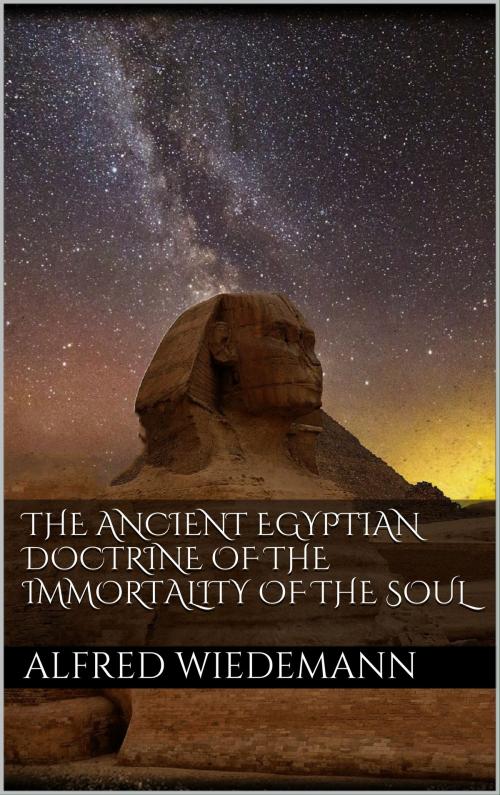| Author: | Alfred Wiedemann | ISBN: | 9783748102595 |
| Publisher: | Books on Demand | Publication: | March 19, 2019 |
| Imprint: | Language: | English |
| Author: | Alfred Wiedemann |
| ISBN: | 9783748102595 |
| Publisher: | Books on Demand |
| Publication: | March 19, 2019 |
| Imprint: | |
| Language: | English |
IN writing this treatise my object has been to give a clear exposition of the most important shape which the doctrine of immortality assumed in Egypt. This particular form of the doctrine was only one of many different ones that were held. The latter, however, were but occasional manifestations, whereas the system here treated of was the popular belief among all classes of the Egyptian people, from early to Coptic times. By far the greater part of the religious papyri and tomb texts and of the inscriptions of funerary stelæ are devoted to it; the symbolism of nearly all the amulets is connected with it; it was bound up with the practice of mummifying the dead; and it centred in the person of Osiris, the most popular of all the gods of Egypt. Even in Pyramid times Osiris had already attained pre-eminence; he maintained this position throughout the whole duration of Egyptian national life, and even survived its fall. From the fourth century B.C. he, together with his companion deities, entered into the religious life of the Greeks; and homage was paid to him by imperial Rome. Throughout the length and breadth of the Roman Empire, even to the remotest provinces of the Danube and the Rhine, altars were raised to him, to his wife Isis, and to his son Harpocrates; and wherever his worship spread, it carried with it that doctrine of immortality which was associated with his name. This Osirian doctrine influenced the systems of Greek philosophers; it made itself felt in the teachings of the Gnostics; we find traces of it in the writings of Christian apologists and the older fathers of the Church, and through their agency it has affected the thoughts and opinions of our own time.
IN writing this treatise my object has been to give a clear exposition of the most important shape which the doctrine of immortality assumed in Egypt. This particular form of the doctrine was only one of many different ones that were held. The latter, however, were but occasional manifestations, whereas the system here treated of was the popular belief among all classes of the Egyptian people, from early to Coptic times. By far the greater part of the religious papyri and tomb texts and of the inscriptions of funerary stelæ are devoted to it; the symbolism of nearly all the amulets is connected with it; it was bound up with the practice of mummifying the dead; and it centred in the person of Osiris, the most popular of all the gods of Egypt. Even in Pyramid times Osiris had already attained pre-eminence; he maintained this position throughout the whole duration of Egyptian national life, and even survived its fall. From the fourth century B.C. he, together with his companion deities, entered into the religious life of the Greeks; and homage was paid to him by imperial Rome. Throughout the length and breadth of the Roman Empire, even to the remotest provinces of the Danube and the Rhine, altars were raised to him, to his wife Isis, and to his son Harpocrates; and wherever his worship spread, it carried with it that doctrine of immortality which was associated with his name. This Osirian doctrine influenced the systems of Greek philosophers; it made itself felt in the teachings of the Gnostics; we find traces of it in the writings of Christian apologists and the older fathers of the Church, and through their agency it has affected the thoughts and opinions of our own time.















